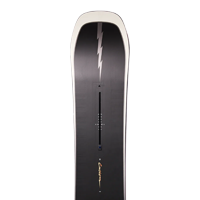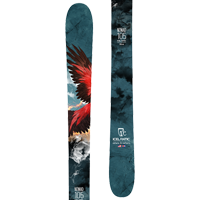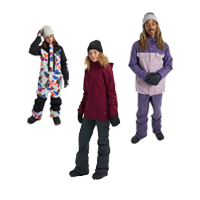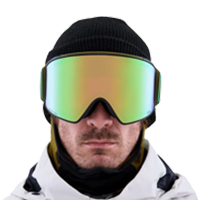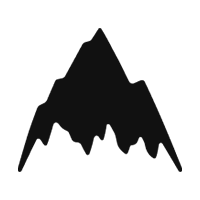Every year it seems like there is a new board being released with a new type of camber profile. With so many differently shaped boards it can be difficult to tell which one will be best suited to your skill level and your riding style. Fortunately we have broken down all these different shapes into a few simple categories which should assist you in finding your next perfect board.
Positive Camber
Positive Camber is the original snowboard shape, and is still one of the most common shapes on the market today. This is due to the shape being perfectly suited to aggressive riders who want maximum grip, as well as big ollies and great pop. The positive camber shape has has 2 pressure points at either end of the board, and a continuous upwards curve in between. These 2 pressure points are what gives camber shaped boards their amazing grip. The continuous upward curve adds a good amount of spring to the board, allowing it to be quick and snappy as well as quiet poppy. Positive camber boards are great for anyone who has done a bit of snowboarding, that is looking for a board which has great grip but also has nice pop.
Directional Camber is an alternative of Positive Camber, which features a curve which is set back close to the tail, meaning the camber kicks up more towards the back. This provides a nose which floats up above the snow, making Directional Camber perfect for deep powder.
Positive Camber may also be referred to as; Standard Camber, Regular Camber, Traditional Camber
Reserve Camber (Rocker)
Reverse Camber, commonly referred to as Rocker, is an easy riding board shape. It's continuous curve provides and easy, catch free, surfy feel that is perfect for anyone who wants a cruisy board. Since the curve of a Reverse Camber board is shaped in the direction of the turn, it is easy to initiate turns, and the board follows through the turn easily. Reverse Camber board are perfect for any beginner level rider who hasn't done a lot of snowboarding that wants an easy, forgiving ride.
Reverse Camber may also be referred to as; Rocker, BTX, PBTX, Banana, V Rocker, Press-Sure Rocker, Drift Rocker.
Flat Camber
Flat camber is simply a completely flat board between the tip and tail. This allows for a loose forgiving ride that provides more grip then a Reverse Camber shape board. Due to the completely flat shape they tend to be very floaty, and can be easily be sized down into a shorter size. Flat Camber boards are very common for Park riders due to their catch free nature, making them perfect for hitting rails and other features
Flat Camber may also be referred to as; Nitro Zero Camber, Anti Camber, Super Flat.
Hybrid Camber
Hybrid Camber combines Positive Camber and Reverse Camber together to allow for a more forgiving ride while still providing good grip. The Positive Camber at each end of the board allow for bigger ollies, and allow for more comfortable landings. Hybrid Camber can also be a good option for deeper powder, since the rocker tip keeps the board above the deep snow.
Hybrid Camber may also be referred to as; C3, Grandpops, Micro Camber, Lock & Load, Flat Out Camber, Rock Out Camber
Flying V Camber
Flying V Camber combines rocker at the center of the board with positive camber under each foot. This allows for the great grip that a positive camber board is known for, but with the added forgiveness of a Rocker board. Flying V camber is great for any beginner to intermediate rider that wants a fast but forgiving board.
Flying V Camber may also be referred to as; Rocker & Camber, Moustache Camber, Double Dog, C2, EC2 Clash Rocker
